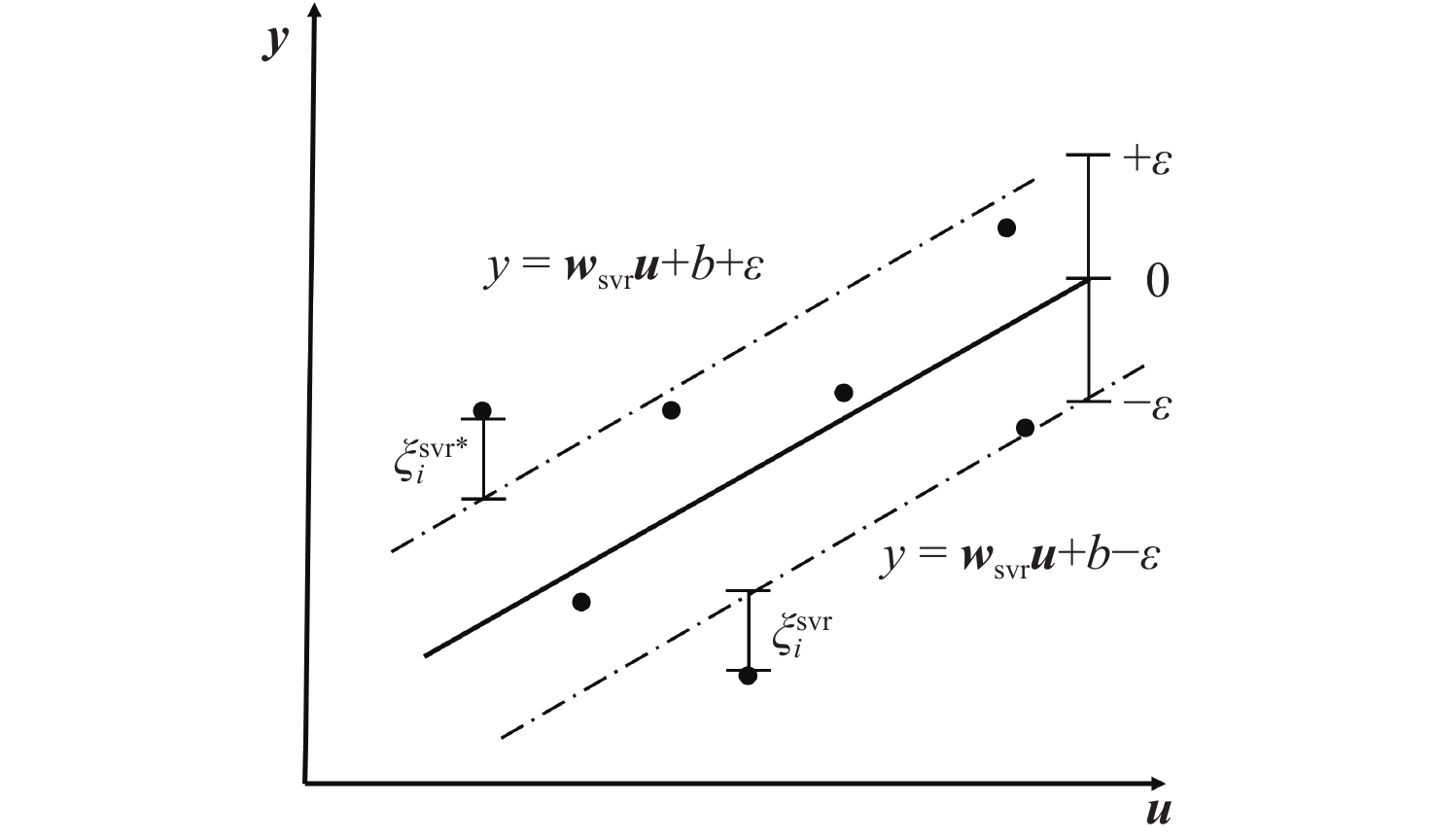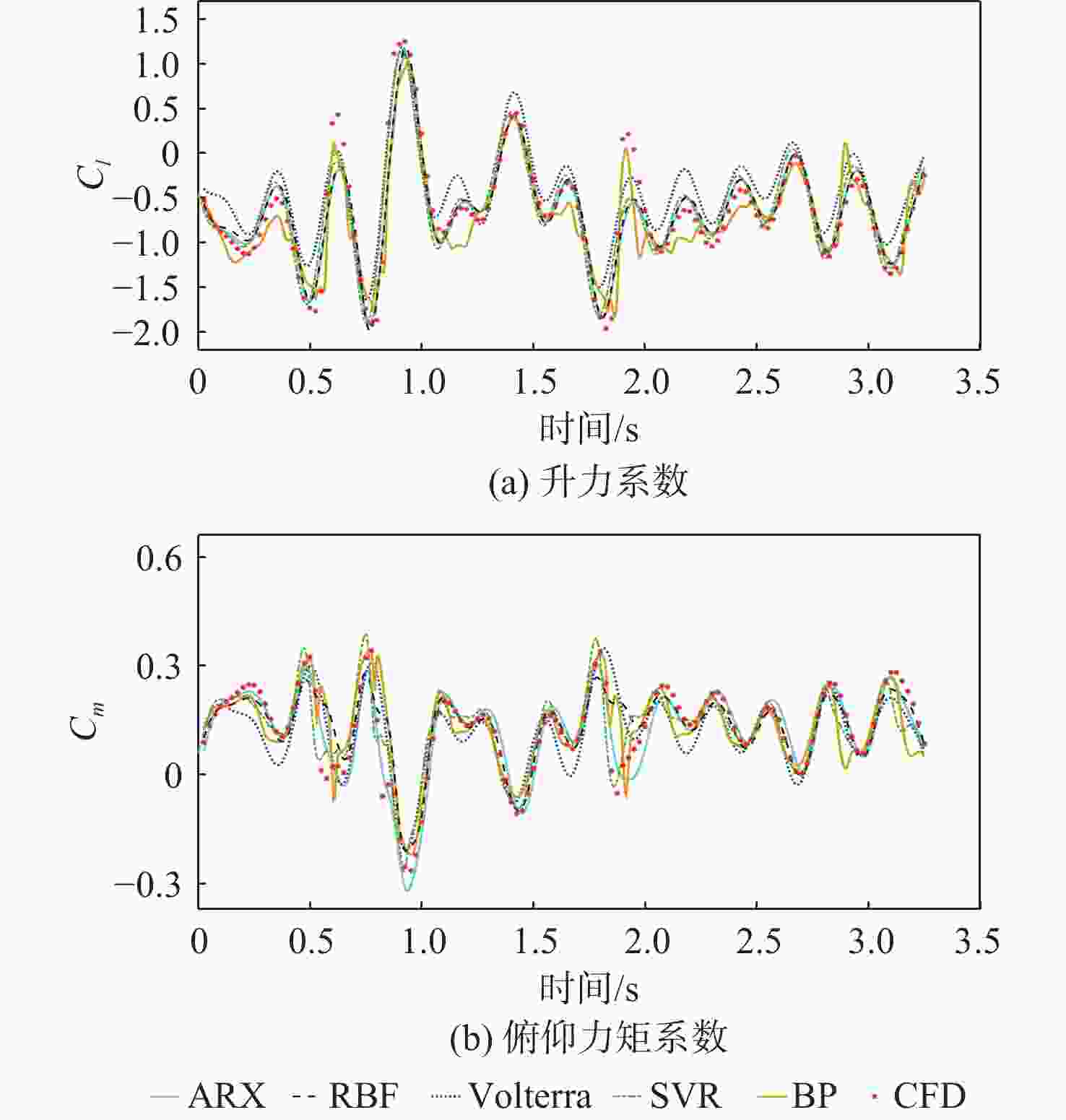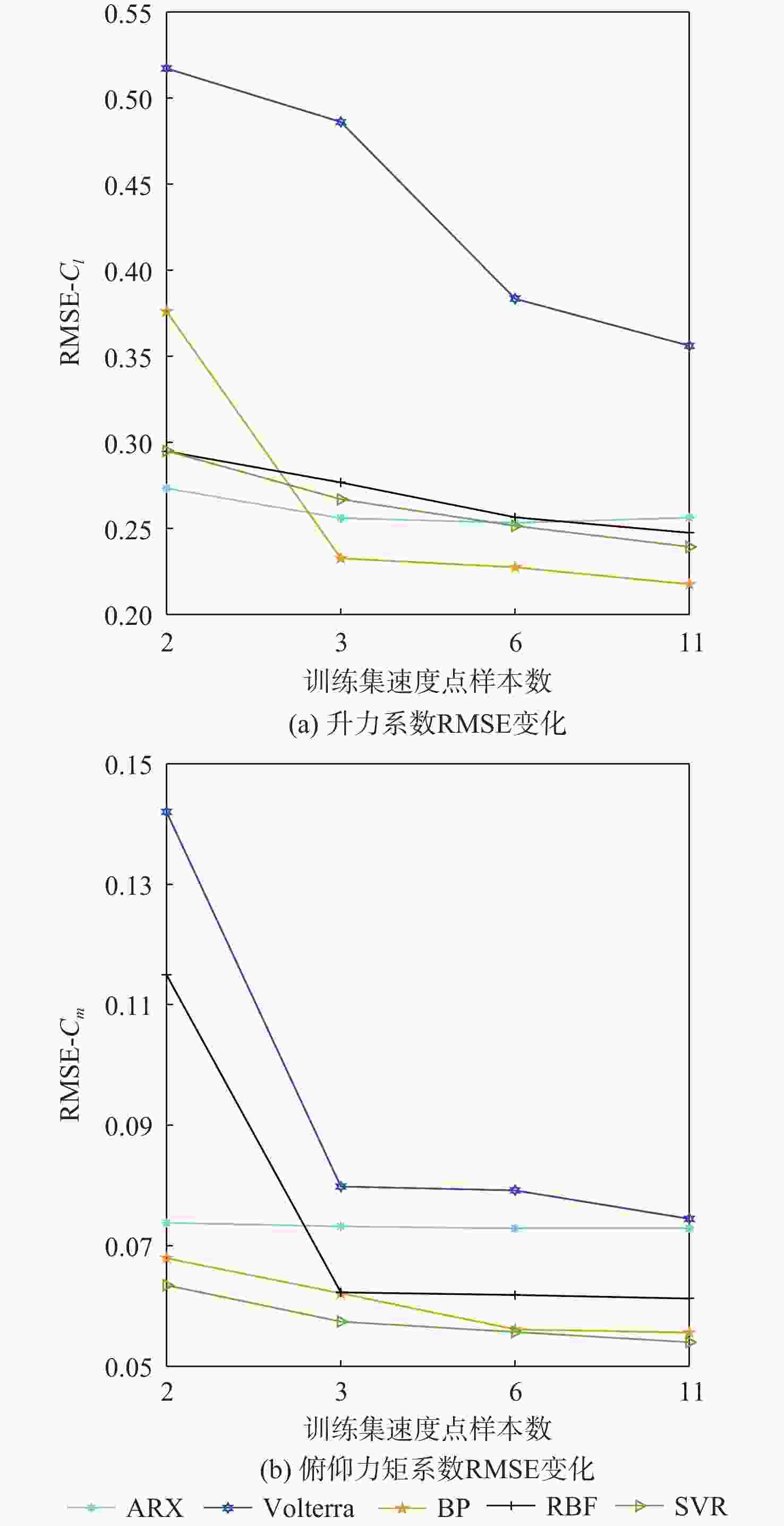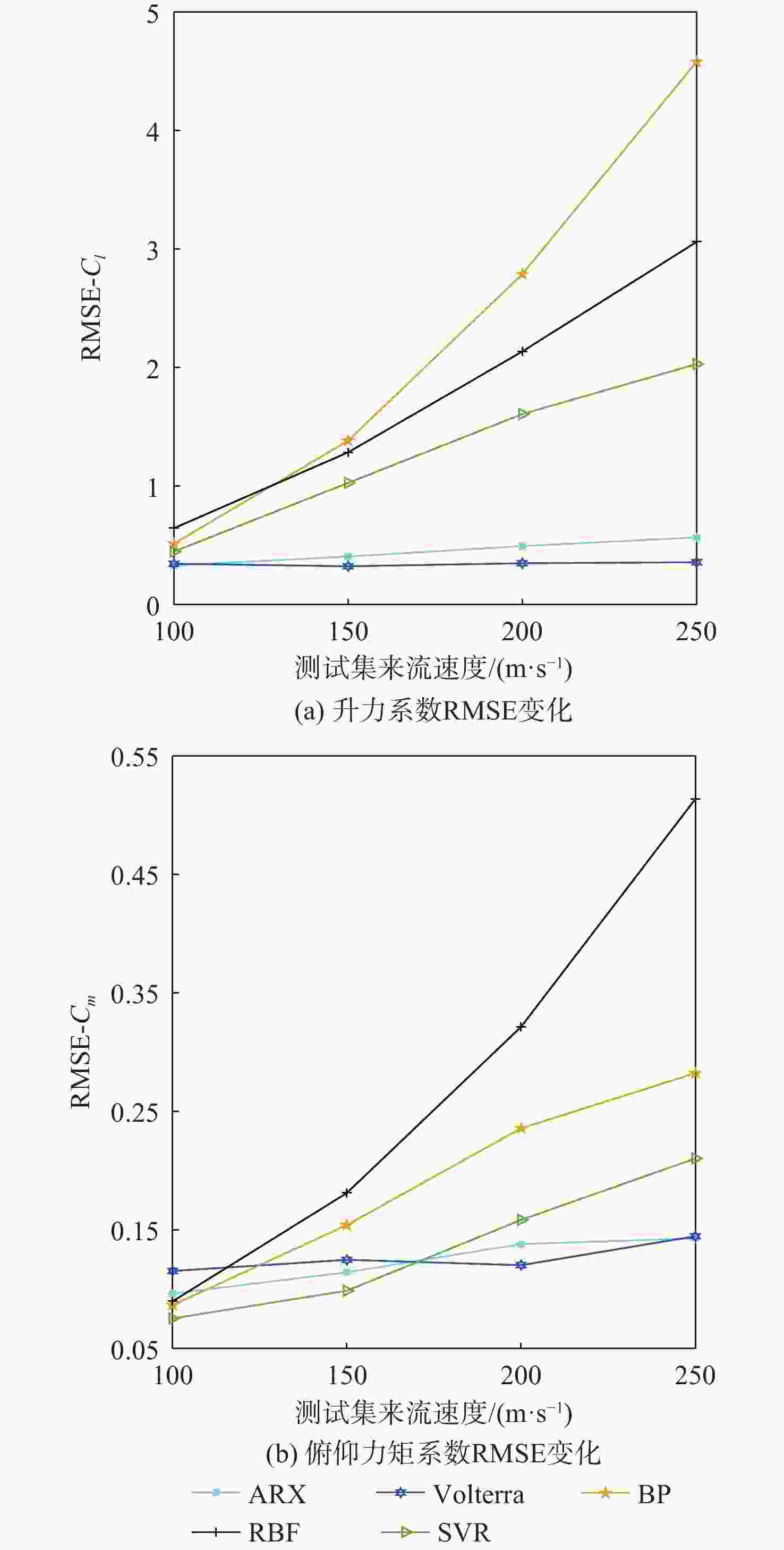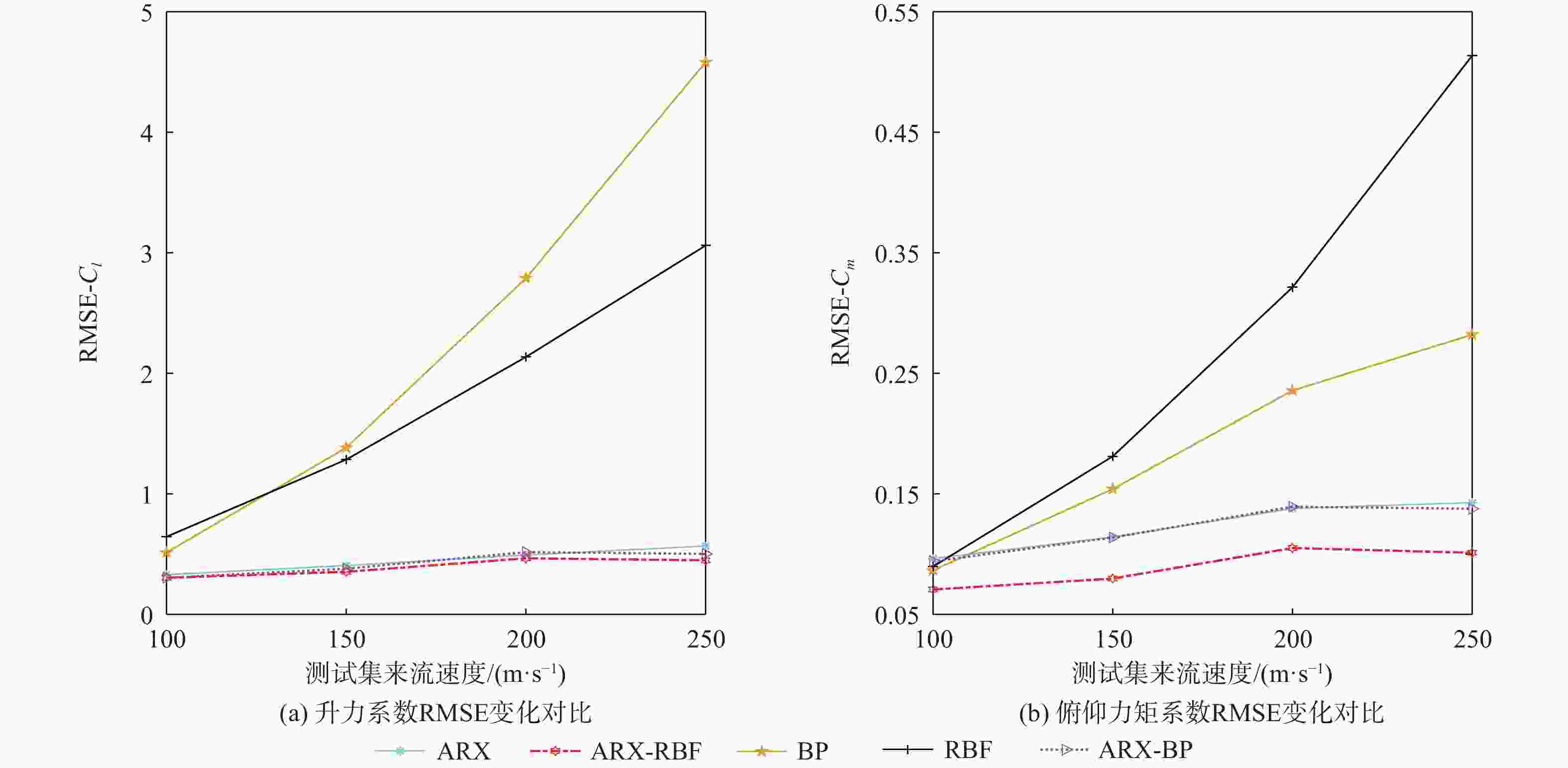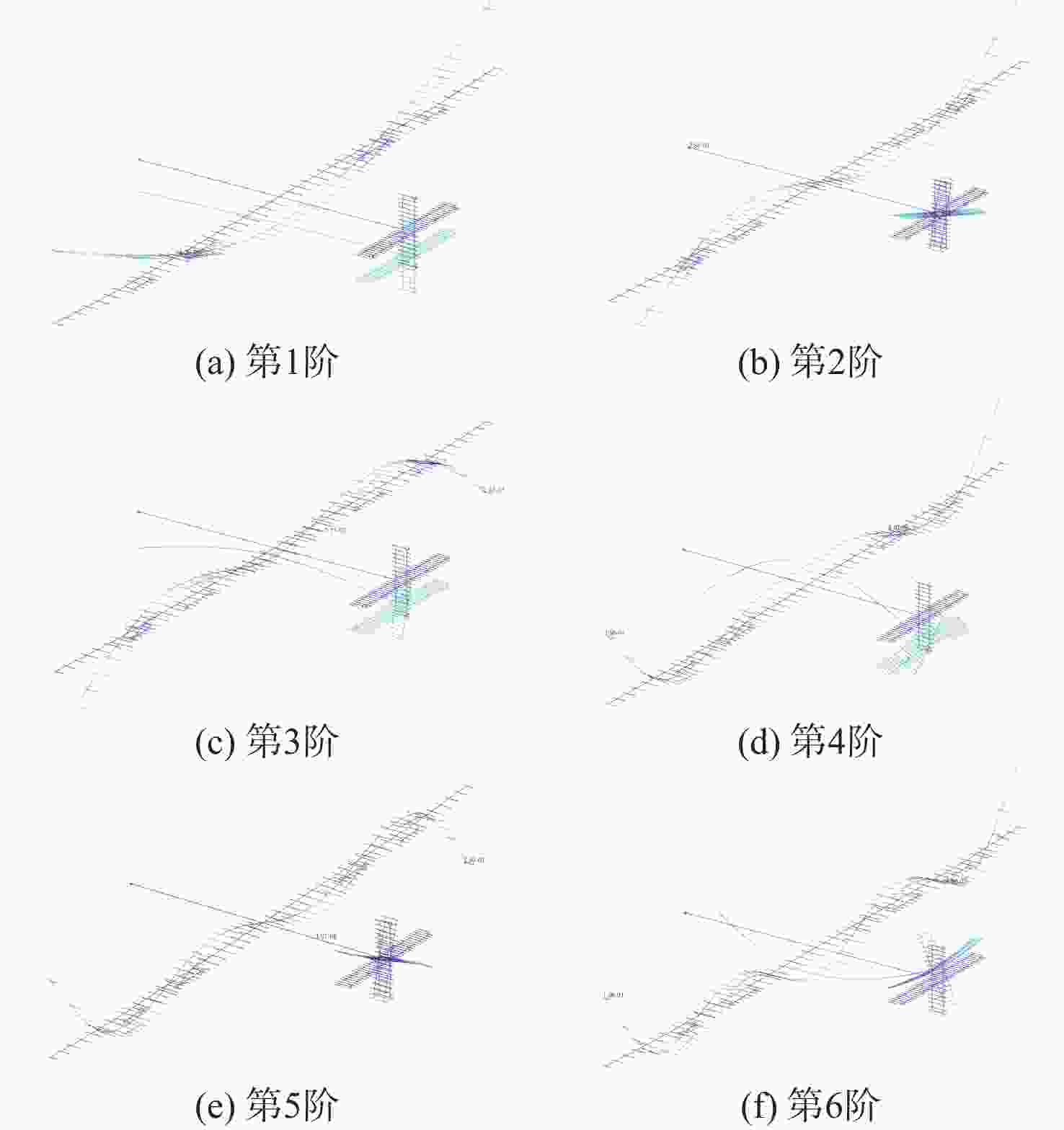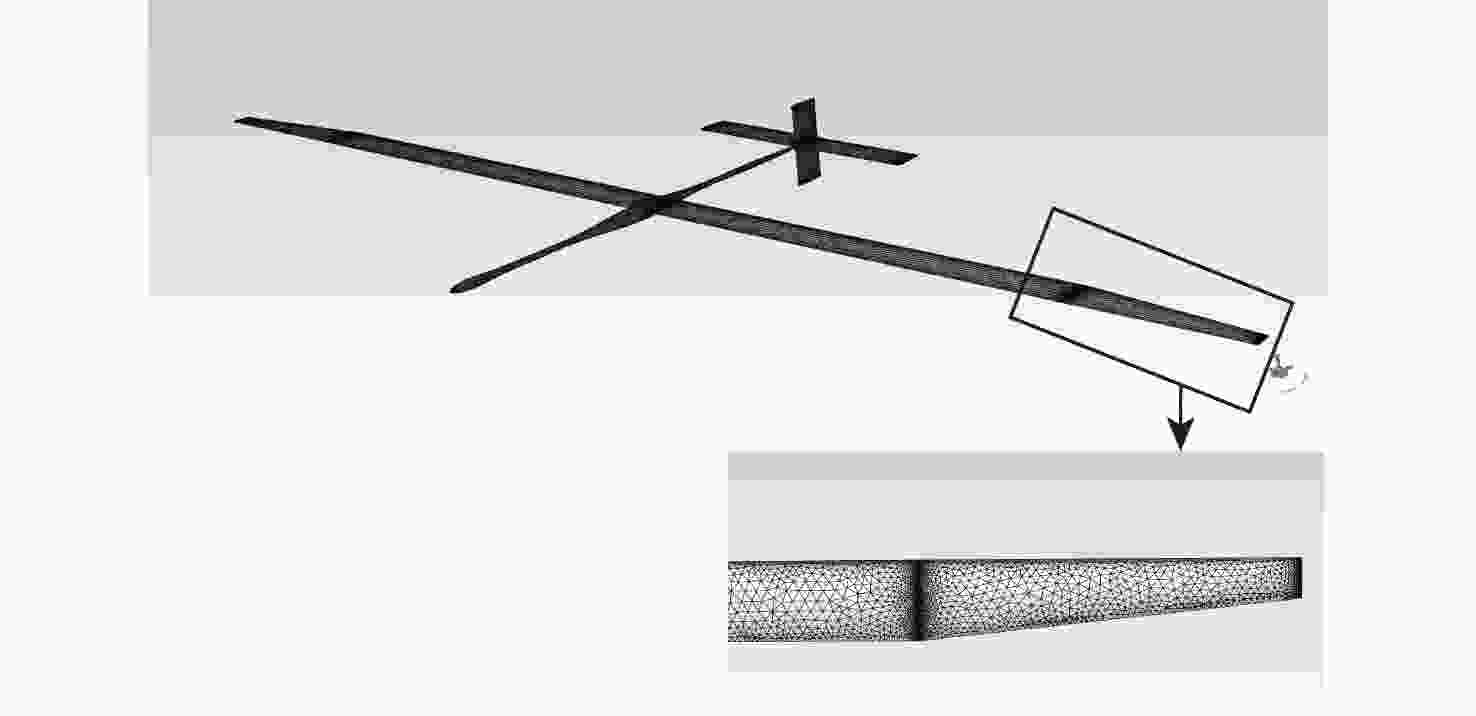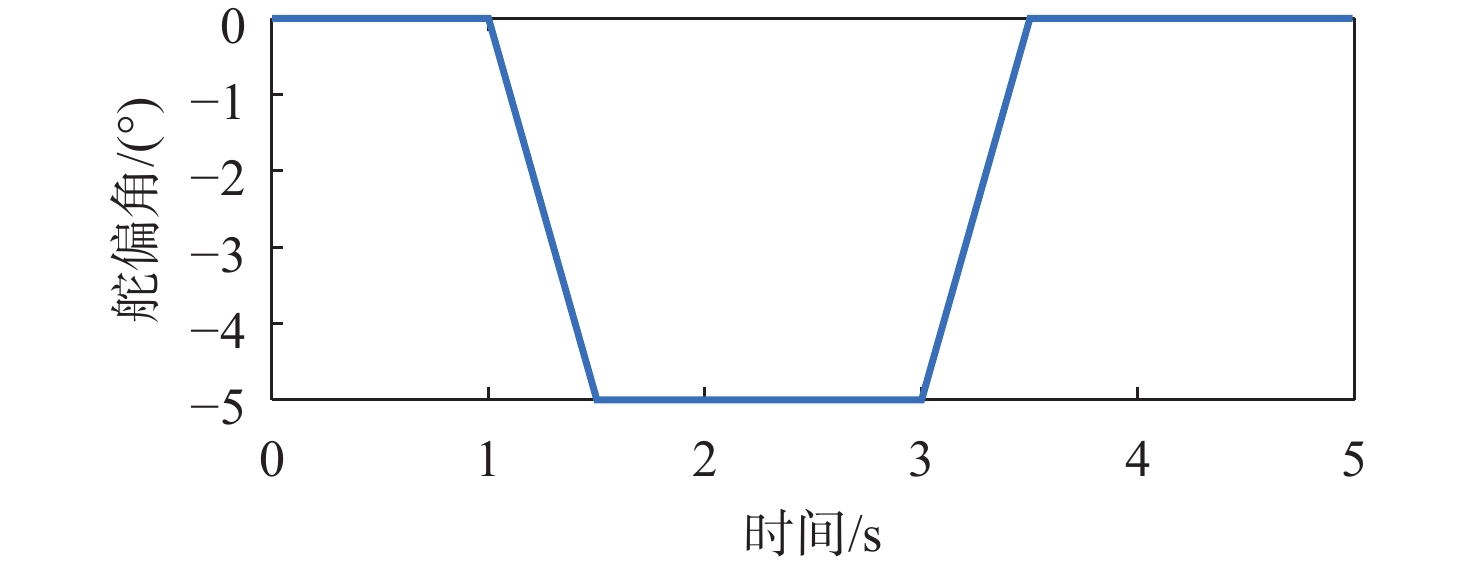-
摘要:
针对低速太阳能无人机在由阵风引起的大迎角非线性气动力情况下的高精度、高效率气动弹性及飞行动力学工程仿真问题,对气动力降阶方法及其在飞行动力学仿真中的应用进行深入探索。以二维翼型为例,分别基于自回归外部输入模型(ARX)方法、多小波Volterra级数方法、反向传播(BP)、径向基函数(RBF)神经网络方法和支持向量回归(SVR)方法建立了非定常气动力降阶模型,并比较了5种方法的收敛性及泛化能力。在此基础之上综合ARX和神经网络方法的优点提出一种计算精度高,收敛性、泛化能力较强的ARX-BP/RBF组合建模方法。将基于ARX-RBF的组合气动力降阶方法和弹性飞机刚弹耦合动力学方程相结合建立基于气动力降阶的弹性飞机飞行动力学仿真模型。以一架太阳能无人机模型为例,开展数值验证,对算例对象在阵风及舵面激励下的响应进行仿真研究,并和计算流体力学(CFD)-计算结构动力学(CSD)结果及基于线性气动力的仿真结果进行对比。结果表明:所建立的弹性飞机仿真模型能有效反映气动力非线性特性,且仿真效率高于CFD-CSD分析方法,适用于工程实践。
Abstract:We develop an aeroelasticity and flight dynamics simulation model with nonlinear aerodynamic reduced order model for low-speed solar unmanned aerial vehicles under high angle of attack caused by gust. Five aerodynamic reduced-order models are created in light of the aforementioned issues, and their use in simulating flight dynamics is further explored. The reduced order models include the model based on the autoregressive model with eXogenous inputs (ARX) method, multi-wavelet Volterra series method, back propagation (BP) neural network, radial basis function (RBF) neural network and support vector regression. Then the convergence and the generalization ability of the five models are compared, and a new model with high precision and strong generalization ability is proposed, which is a combination of ARX and neural network model. Taking a solar UAV model as an example, combining an aerodynamic reduced order model with a rigid-elastic coupling dynamic equation, the flight dynamics simulation model of elastic aircraft is established. Lastly, the computational fluid dynamics-computational structural dynamics (CFD-CSD) outputs and the outcomes of the simulation model based on linear aerodynamics are compared with the simulation results to determine how the UAV model responds to gusts. The results show that the performance of the elastic aircraft simulation model in aerodynamic prediction and gust response analysis is better than that of the model based on linear aerodynamics and is in good agreement with the CFD-CSD model, and the simulation efficiency is much higher than that of the CFD-CSD analysis.
-
表 1 CFD计算验证算例翼型运动参数
Table 1. Airfoil motion parameters of CFD case
翼型弦长/m 来流速度/
(m·s−1)初始迎
角/(°)俯仰运动
幅值/(°)减缩频率 0.55 40.8 15 10 0.124 表 2 训练集速度点设置
Table 2. Speed settings for training sets
训练集编号 训练集包含的速度点/(m·s−1) 1 10,60 2 10,35,60 3 10,20,30,40,50,60 4 10,15,20,25,30,35,40,45,50,55,60 表 3 测试集速度点设置
Table 3. Speed settings for test sets
测试集编号 测试集速度/( m·s−1) 1 55 2 33 3 22 4 12 5 10 表 4 各模型相同测试集计算时间对比
Table 4. Comparison of calculation efficiency for same test set for each model
模型 计算时间/s ARX 0.005 Volterra 0.080 BP 0.009 RBF 0.045 SVR 0.052 表 5 组合模型相同测试集计算时间对比
Table 5. Comparison of calculation efficiency for same test set for each model
模型 计算时间/s ARX-RBF 0.0505 ARX-BP 0.0120 表 6 太阳能无人机结构主要参数
Table 6. Main structural parameters of solar UAV
结构参数 数值 机翼展长/m 50.00 机翼弦长/m 1.72 平尾展长/m 10.20 平尾弦长/m 1.52 垂尾展长/m 4.77 垂尾弦长/m 1.52 质量/kg 424.70 质心到机头距离/m 10.87 转动惯量Ixx/(kg·m2) 5.9387×104 转动惯量/Iyy/(kg·m2) 4.8061×103 转动惯量/Izz/(kg·m2) 6.4156×104 转动惯量/Ixz/(kg·m2) 0.2516 表 7 弹性模态频率
Table 7. Elastic modal frequency
阶数 频率/Hz 1 0.48 2 1.33 3 2.01 4 3.36 5 3.55 6 4.74 表 8 来流及SIN型阵风参数
Table 8. Incoming flow and SIN type gust parameters
来流风速/(m·s−1) 阵风形式 阵风幅值/(m·s−1) 阵风频率/ Hz 20 SIN型 7 1.2 表 9 计算效率对比
Table 9. Comparison of calculation efficiency
模型 时间步长/s 时间步数 计算时间/min CFD-CSD 0.001 5000 2398 本文模型 0.001 5000 77 表 10 来流及1-COS型型阵风参数
Table 10. Incoming flow and 1-COS type gust parameters
编号 来流风速/
(m·s−1)阵风形式 阵风幅值/
(m·s−1)尺度L1/m 尺度L2/m 1 20 1-COS型 1 30 40 2 20 1-COS型 5 10 40 3 20 1-COS型 7 30 50 -
[1] 王少奇, 马东立, 杨穆清, 等. 高空太阳能无人机三维航迹优化[J]. 北京航空航天大学学报, 2019, 45(5): 936-943. doi: 10.13700/j.bh.1001-5965.2018.0511WANG S Q, MA D L, YANG M Q, et al. Three-dimensional optimal path planning for high-altitude solar-powered UAV[J]. Journal of Beijing University of Aeronautics and Astronautics, 2019, 45(5): 936-943(in Chinese). doi: 10.13700/j.bh.1001-5965.2018.0511 [2] 刘藤, 李栋, 黄冉冉, 等. 基于降阶模型的翼型结冰冰形预测方法[J]. 北京航空航天大学学报, 2019, 45(5): 1033-1041. doi: 10.13700/j.bh.1001-5965.2018.0474LIU T, LI D, HUANG R R, et al. Ice shape prediction method of aero-icing based on reduced order model[J]. Journal of Beijing University of Aeronautics and Astronautics, 2019, 45(5): 1033-1041(in Chinese). doi: 10.13700/j.bh.1001-5965.2018.0474 [3] 杨国伟, 王济康. CFD结合降阶模型预测阵风响应[J]. 力学学报, 2008, 40(2): 145-153. doi: 10.3321/j.issn:0459-1879.2008.02.001YANG G W, WANG J K. Prediction of gust response by CFD combined with reduced order model[J]. Acta Mechanica Sinica, 2008, 40(2): 145-153(in Chinese). doi: 10.3321/j.issn:0459-1879.2008.02.001 [4] 张伟伟, 叶正寅. 基于气动力降阶模型的跨音速气动弹性稳定性分析[J]. 振动工程学报, 2007, 24(6): 768-772.ZHANG W W, YE Z Y. Transonic aeroelastic stability analysis based on aerodynamic reduced order model[J]. Journal of Vibration Engineering, 2007, 24(6): 768-772(in Chinese). [5] 师妍, 万志强, 吴志刚, 等. 基于气动力降阶的弹性飞机阵风响应仿真分析及验证[J]. 航空学报, 2022, 43(1): 125474.SHI Y, WAN Z Q, WU Z Q, et al. Gust response analysis and verification of elastic aircraft based on nonlinear aerodynamic reduced order model[J]. Acta Aeronautica et Astronautica Sinica, 2022, 43(1): 125474(in Chinese). [6] LIND R, PRAZENICA R J, BRENNER M J, et al. Identifying parameter dependent Volterra kernels to predict aeroelastic instabilities[J]. AIAA Journal, 2005, 43(12): 2496-2502. doi: 10.2514/1.12042 [7] 吴志刚, 杨超. 基于Volterra级数的跨音速非定常气动力建模[J]. 北京航空航天大学学报, 2006, 32(4): 373-376. doi: 10.3969/j.issn.1001-5965.2006.04.001WU Z G, YANG C. Volterra series based transonic unsteady aerodynamics modeling[J]. Journal of Beijing University of Aeronautics and Astronautics, 2006, 32(4): 373-376(in Chinese). doi: 10.3969/j.issn.1001-5965.2006.04.001 [8] PRAZENICA R J, REISENTHEL P H, KURDILA A J, et al. Volterra kernel extrapolation for modeling nonlinear aeroelastic systems at novel flight conditions[J]. Journal of Aircraft, 2007, 44(1): 149-162. doi: 10.2514/1.22764 [9] OMRAN A, NEWMAN B. Full envelope nonlinear parameter- varying model approach for atmospheric flight dynamics[J]. Journal of Guidance, Control, and Dynamics, 2012, 35(1): 270-283. doi: 10.2514/1.51577 [10] 王云海, 韩景龙, 张兵, 等. 空气动力二阶核函数辨识方法[J]. 航空学报, 2014, 35(11): 2949-2957.WANG Y H, HAN J L, ZHANG B, et al. Aerodynamic second order kernel function identification method[J]. Acta Aeronautica et Astronautica Sinica, 2014, 35(11): 2949-2957(in Chinese). [11] 陈森林, 高正红, 饶丹. 基于多小波的Volterra级数非定常气动力建模方法[J]. 航空学报, 2018, 39(1): 121379.CHEN S L, GAO Z H, RAO D. Modeling method of unsteady aerodynamics based on multiwavelet Volterra series[J]. Acta Aeronautica et Astronautica Sinica, 2018, 39(1): 121379(in Chinese). [12] 王超, 王贵东, 白鹏. 飞行仿真气动力数据机器学习建模方法[J]. 空气动力学学报, 2019, 37(3): 488-497.WANG C, WANG G D, BAI P. Machine learning modeling method for aerodynamic data of flight simulation[J]. Acta Aerodynamics Sinica, 2019, 37(3): 488-497(in Chinese). [13] ZHANG W W, WANG B B, YE Z Y, et al. Efficient method for limit cycle flutter analysis based on nonlinear aerodynamic reduced-order models[J]. AIAA Journal, 2012, 50(5): 1019-1028. doi: 10.2514/1.J050581 [14] KOU J Q, ZHANG W W. Reduced-order modeling for nonlinear aeroelasticity with varying Mach numbers[J]. Journal of Aerospace Engineering, 2018, 31(6): 04018105. doi: 10.1061/(ASCE)AS.1943-5525.0000932 [15] KOU J Q, ZHANG W W. Multi-kernel neural networks for nonlinear unsteady aerodynamic reduced-order modeling[J]. Aerospace Science and Technology, 2017, 67: 309-326. doi: 10.1016/j.ast.2017.04.017 [16] JIANG Y, ZHAO Q, ZHU J. Unsteady aerodynamics modeling using SVM and artificial neural network[C]//Proceedings of the 2015 Chinese Intelligent Automation Conference: Intelligent Information Processing. Berlin : Springer, 2015: 577-585. [17] WANG Q, QIAN W Q, HE K F. Unsteady aerodynamic modeling at high angles of attack using support vector machines[J]. Chinese Journal of Aeronautics, 2015, 28(3): 659-668. doi: 10.1016/j.cja.2015.03.010 [18] CHEN S L, GAO Z H, ZHU X Q, et al. Unstable unsteady aerodynamic modeling based on least squares support vector machines with general excitation[J]. Chinese Journal of Aeronautics, 2020, 33(10): 2499-2509. doi: 10.1016/j.cja.2020.03.009 [19] NARENDRA K, GALLMAN P. An iterative method for the identification of nonlinear systems using a Hammerstein model[J]. IEEE Transactions on Automatic Control, 1966, 11(3): 634-638. [20] SHENG W, GALBRAITH R A, COTON F N. A modified dynamic stall model for low mach numbers[J]. Journal of Solar Energy Engineering, 2007, 130(3): 653-653. -







 下载:
下载:

